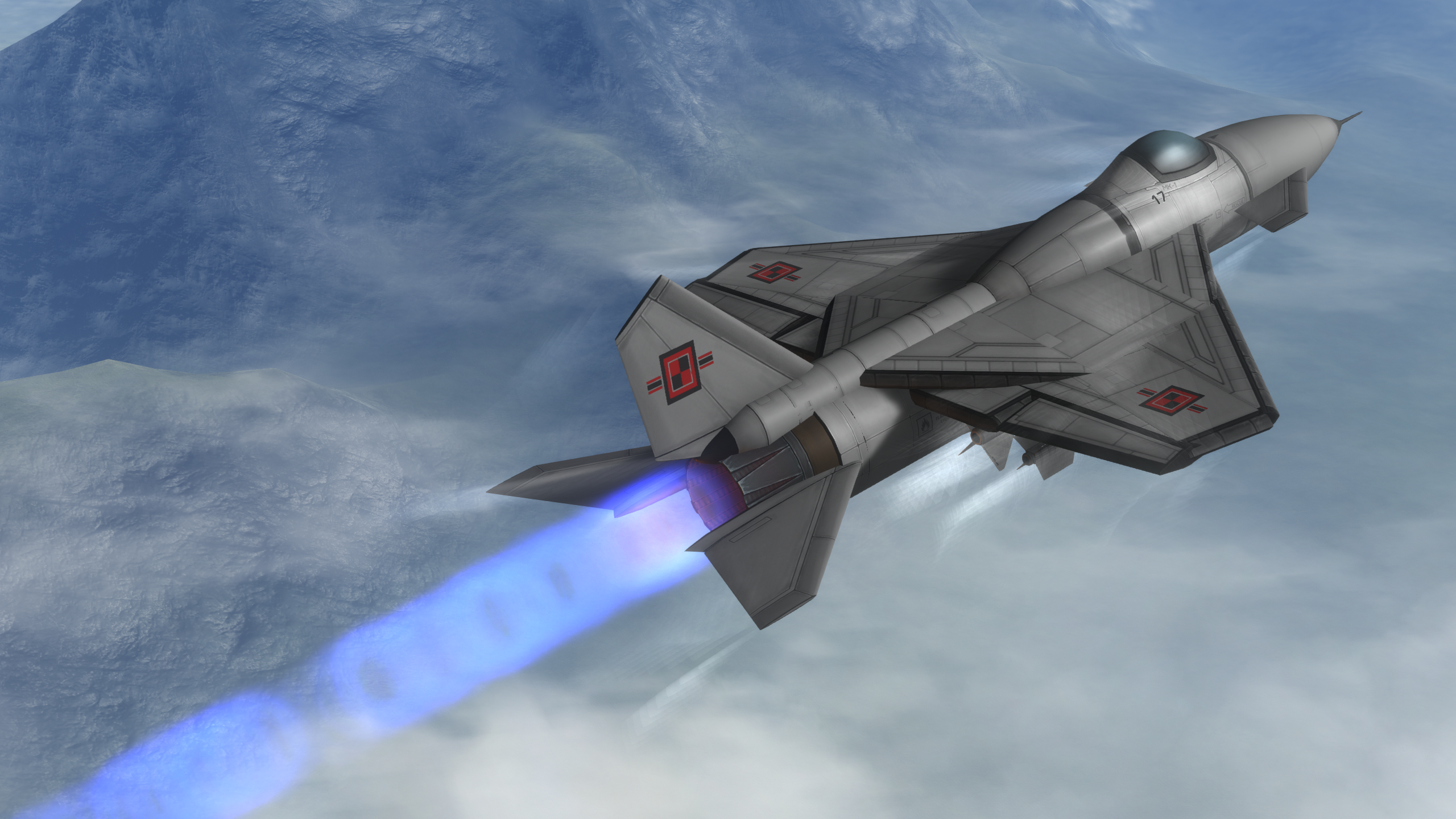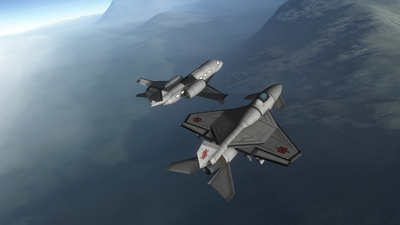L-23 Jastreb: Difference between revisions
Slippulter (talk | contribs) (Adding info about aircraft development) |
Slippulter (talk | contribs) mNo edit summary |
||
| Line 44: | Line 44: | ||
=== Third Redesign === |
=== Third Redesign === |
||
The final redesign took place in the late 2140's, with the goal being bringing the aircraft to modern standards by redesigning it from the ground up. As such, it was made anew with no older internal elements being used, and shape and materials of the aircraft reworked. It eventually entered service as the L-23E Mod 2, and later L-23F and experimental L-23G Model. In this form, it is set to continue in the Kalban Airforce for decades to come, and giving it highly advanced multirole capabilities. |
The final redesign took place in the late 2140's, with the goal being bringing the aircraft to modern standards by redesigning it from the ground up. As such, it was made anew with no older internal elements being used, and shape and materials of the aircraft reworked. It eventually entered service as the L-23E Mod 2, and later L-23F and experimental L-23G Model. In this form, it is set to continue in the Kalban Airforce for decades to come, and giving it highly advanced multirole capabilities. |
||
| + | |||
| + | == Design Overview == |
||
[[File:L-23_3.png|400px|thumb|right|L-23E (017) Intercepting a civilian flight not responding to ATC]] |
[[File:L-23_3.png|400px|thumb|right|L-23E (017) Intercepting a civilian flight not responding to ATC]] |
||
Revision as of 02:38, 30 October 2022
The PAI L-23 Jastreb is a family of Kalban Multirole aircraft, capable of serving in Air Superiority, Ground Attack, and support roles. Original designs of the aircraft trace back to the Balgred Aeronautical Institute in the SFRK, with the blueprints being recovered and design completed by the Pecovia Aeronautical Instiute in the New Kalban Republic, following the Kalban Reunification. It has been fully redesigned 3 times, and undergone countless other major and minor upgrades.
Originally, the L-23 was a product of a highly classified program for the development of a new air superiority fighter in the SFRK. Following it's collapse and the start of the civil war, all documents about the fighter were hidden in vaults of the Balgred Institute, or destroyed. During the Reconstruction of Kalbanija, the workers examining the facilities of the institute, with Fortisian helpers, breached the vaults and uncovered the designs. Seeing great potential in the design, it was continued, with the goal being for it to serve as the first domestically produced fighter post reunification. The goal was achieved, and the aircraft performed satisfactorily. It was later redesigned in the 2140's, to make use of newer technologies and design processes, resulting in the creation of the latest, third, generation of the aircraft.
|
L-23 Jastreb
PAI L-23 Jastreb
|
|||||
|---|---|---|---|---|---|
| Aircraft | |||||
 |
|||||
| L-23E Mod 2 conducting a training flight over central Kalbanija | |||||
| Role | Multirole Fighter | ||||
| National Origin | Socialist Federative Republic of Kalbanija New Kalban Republic |
||||
| Production History | |||||
| Designed | |||||
| Unknown - 2141 | |||||
| Produced | |||||
| 2141 - ongoing | |||||
| Designer | Balgred Aeronautical Institute Pecovia Aeronautical Institute |
||||
| Unit Cost | 28,204(√) | ||||
| Number Built | >600 | ||||
| Service History | |||||
| In Service | |||||
| 2042 - ongoing | |||||
| Used By | New Kalban Republic | ||||
| Aircraft Characteristics | |||||
| Dry Mass | 6.796t | ||||
| Length | 11.7m m | ||||
| Width | 8.4m m | ||||
| Height | 3.1m m | ||||
| Propulsion | 1x AL-31 Saturn Afterburning Jet Engine | ||||
| Operational Range | Classified km | ||||
| Crew | 1 | ||||
| Sensor Systems | APG-77 Radar WIP - Datalink WIP - TPOD WIP - Missile Warning System |
||||
| Armament | Twin Vulcan | ||||
| Variants | First Generation: - L-23A - L-23B - L-23C Second Generation: - L-23D - L-23E Mod 1 Third Generation: - L-23E Mod 2 - L-23F - L-23G |
||||
Development
Original Designs
Development of the L-23 started in the closing years of the SFRK, originally intended as a somewhat export oriented multirole fighter, to fund future ventured by the Balgred institute. However, the collapse of the SFRK, and the resulting civil war ended any chance of project completion at the time, prompting the remains of the SFRK Government to bury all documents and information related to the project in vaults. The original design specifications called for a single engine, canard delta wing airplane, with datalink connectable with other fighters, AEW Aircraft and ground radars. It was also meant to carry a large amount of guided and unguided air to ground weaponry, including bombs, rockets and missiles. The single engine was soon replaced with a twin engine one due to lackluster performance of the J-404 Panther engine available at the time. The aircraft was manufactured in a limited prototype run, and 12 were used for testing purposes. 2 of these airframes were pushed into combat service during the civil war, participating in the raid on the Balgred Dam.
Second Redesign
As a part of the Reconstruction of Kalbanija, the new Pecovia Air Institute was meant to complete the SFRK era designs, and begin production of a domestic multirole fighter. However, seeing some areas that could be improved upon with the technology advances of the decade, a new version of the aircraft was designed, with the main change being the return to a single engine design utilising the AL-31 Saturn engine, and other notable changes being major updates to sensors, materials and electronics, resulting in creation of the L-23D, the first domestic fighter post-reconstruction. This design was further improved upon, and put into mass service as the L-23E Mod 1. It served as such for almost 10 years before further modernizations were proposed.
Third Redesign
The final redesign took place in the late 2140's, with the goal being bringing the aircraft to modern standards by redesigning it from the ground up. As such, it was made anew with no older internal elements being used, and shape and materials of the aircraft reworked. It eventually entered service as the L-23E Mod 2, and later L-23F and experimental L-23G Model. In this form, it is set to continue in the Kalban Airforce for decades to come, and giving it highly advanced multirole capabilities.
